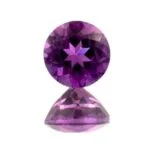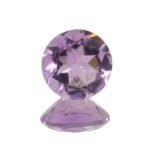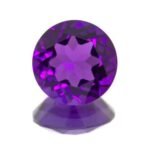Amethyst: The Royal Quartz
Overview
Amethyst, the most coveted variety of quartz, is celebrated as February’s birthstone and symbolizes both the 6th and 17th wedding anniversaries. Historically, the regal purple hue of amethyst has been synonymous with royalty, making it a staple in many royal collections. Its name, derived from the Greek word “amethustos,” translates to “not drunken,” a nod to its wine-like color. Ancient Greeks even believed that drinking from an amethyst cup would ward off inebriation.
Color Spectrum
Naturally, amethyst spans a color range from a muted grayish-violet to a deeply saturated violet or even a reddish-purple. The pinnacle of amethyst quality boasts a rich, unzoned purple or reddish-purple hue. While amethyst is a standout, quartz offers a plethora of varieties, including citrine, rose quartz, smoky quartz, tiger’s-eye, aventurine, and praseolite, to name a few. Regardless of the variety, all quartz gems share the same elemental composition: SiO2 (Silicon Dioxide).
Color Origins and Alterations
The captivating purple hue of amethyst arises from iron impurities. The distinction between amethyst and citrine lies in the oxidation state of these iron impurities within the quartz. Heat plays a pivotal role in altering amethyst’s color, either naturally or through intentional heat treatment. While testing can detect heat treatment, it cannot discern its origin, whether natural or artificial. Often, darker amethysts undergo heating to achieve a more marketable purple shade. Further heating can transform a deep amethyst into a golden-yellow citrine or even a green praseolite.
Properties and Variants
With a hardness of 7 on the Mohs scale, amethyst’s durability makes it a favorite for jewelry. Heat treatment is commonly employed to either enhance its color or transform it into citrine. Modern science has also mastered the creation of lab-grown amethyst, mirroring the natural gem’s composition. Beyond natural and lab-created variants, simulated amethysts, typically crafted from colored glass, offer a more affordable alternative that mimics the appearance of the genuine stone.



